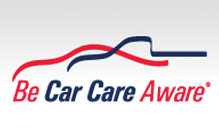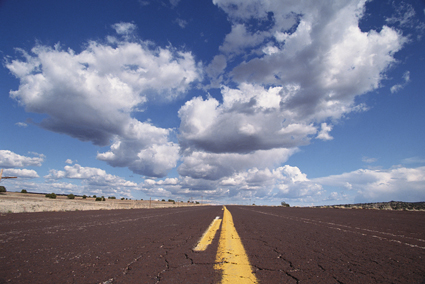
The Car Care Council

DRIVING IN THE "CONE ZONE" CAN BE TOUGH ON VEHICLES
It's bound to happen, that moment when you enter into the "cone zone," road construction where you will likely hit a bump or two, or come across loose stones and other hazards. These rough road conditions can be tough on a vehicle's steering and suspension system and can throw out the alignment while loose stones have the potential to damage the vehicle's exterior or windshield according to the Car Care Council.
"Even the most careful driver who is traveling slowly and carefully through road construction can hit an unexpected bump or other road hazards," said Rich White, executive director, Car Care Council. "The key is to pay attention to your car and if you think there's a problem have it taken care of as soon as possible."
The symptoms of steering and suspension or wheel alignment problems are uneven tire wear, pulling to one side, noise and vibration while cornering or loss of control. The main parts of the systems are shocks and/or struts, the steering knuckle, ball joints, the steering rack/box, bearings, seals or hub units and tie rod ends.
The council recommends that motorists have their vehicles checked out immediately if any of these symptoms exist
as steering and suspension systems are key safety related components and largely determine the car's ride and handling. Regardless of road conditions, these systems should be checked annually and a wheel alignment should be performed at the same time.
Motorists also should do frequent visual checks of their vehicle's exterior and windshield to identify any chips, dings or cracks. These are small problems that can become costly repairs and safety hazards if they aren't taken care of immediately.

TRAVEL BY CAR BETTER DEAL THAN FLYING
Even if gas prices hit $5 a gallon travel by vehicle costs less, is more convenient and is not as stressful as flying according to the Car Care Council. A family of four traveling by car costs the same as one person traveling by air.
"Rising ticket prices, fewer daily flights, fuller planes, limited baggage, fewer non-stops and longer layovers between
connecting flights doesn't paint a pretty picture of flying," said Rich White, executive director, Car Care Council. "However, even with gas prices considerably higher than last year, the cost of driving is a much better deal compared with going by air."
Based on a family of four traveling 1,000 miles round trip, the council compared the cost of flying vs. driving.
By air: A family of four traveling by air will spend an average of $1,508 for tickets based on 2010 third quarter statistics from the Bureau of Transportation Statistics. Add to this cost checked baggage fees, transportation to and from the airport and/or parking.
By vehicle: If gasoline prices were $5 a gallon the cost for a family of four traveling by SUV would be about $350. This number includes the cost of gasoline plus tire wear and maintenance based on the American Automobile Association's (AAA) vehicle operating costs.
In addition to the obvious direct cost savings going by car offers a number of advantages over flying including:
• Leave when you want from where you want.
• No airport parking.
• No waiting in long ticket counter and security lines.
• No weather delays.
• Pack whatever and as much as you want.
• Stop and stretch any time.
• More and better meal options.
• No rental car or taxi expenses.
• More legroom and overall comfort.
• No strangers sitting next to you.
• Convenience and ease of taking your pet with you.
• Better able to enjoy the ride.